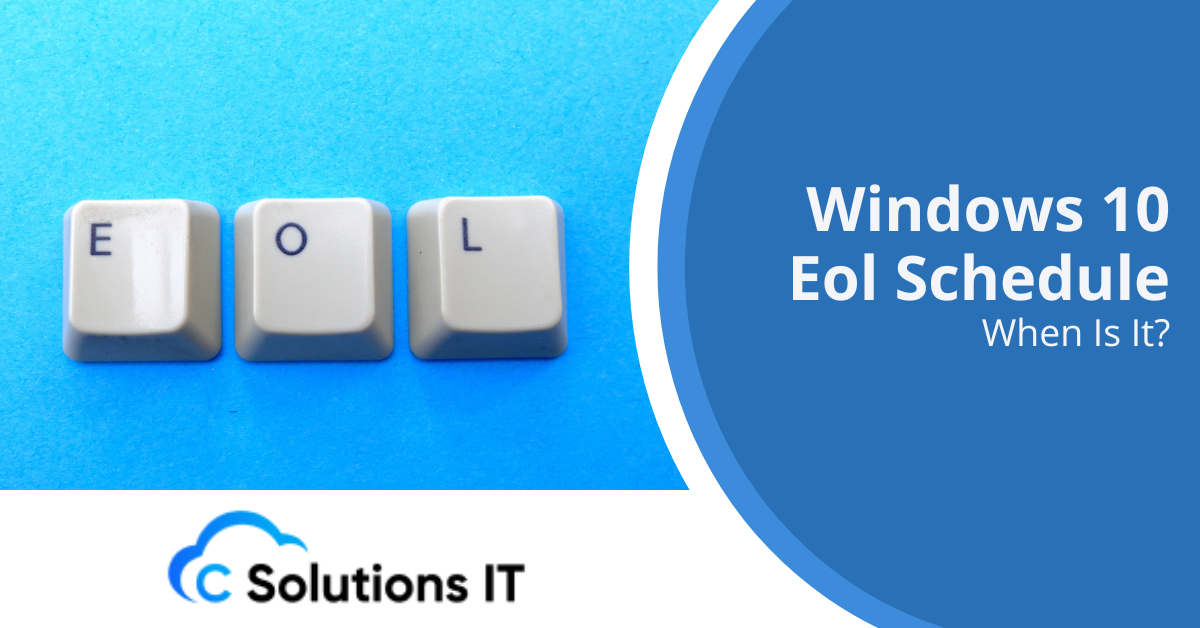Windows 10 Eol Schedule. When Is It?

If you’re a Windows 10 user, mark your calendar for October 14, 2025 – the day Microsoft officially bids farewell to this trusted operating system. Understanding the implications is crucial as the end-of-life date approaches, and planning your next move becomes imperative.
What Happens After October 14, 2025?
Come October 14, 2025, Windows 10 will no longer receive security updates, technical support, or new features from Microsoft. That leaves your PC susceptible to evolving cyber threats, as the protective shield provided by regular updates will be lifted. Without technical assistance, troubleshooting issues becomes a solo endeavor, and you’ll miss out on the innovative features that future Windows versions may introduce.
Exploring Your Options
1. Upgrade to Windows 11
The most straightforward route involves transitioning to Windows 11. Offering performance enhancements, a sleek interface redesign, and exciting features like Android app integration, Windows 11 provides a secure and supported environment. However, it’s essential to check the compatibility of your hardware, as some older systems may need to meet the requirements.
2. Stick with Windows 10
It is possible, but carrying on with Windows 10 beyond October 14, 2025, comes with significant risks. Your system will be open to security vulnerabilities, and you will miss out on the latest features. This decision can only be justified if there are solid reasons for not upgrading, like incompatible hardware or software.
3. Explore Alternative Operating Systems
Switching to a different operating system is a viable option for those looking to break free from the Microsoft ecosystem. Linux distributions like Ubuntu or Fedora offer open-source alternatives with their own set of advantages.
Factors to Consider in Your Decision
Several factors should influence your decision-making process:
Hardware Compatibility
The first critical factor to consider is the compatibility of your existing hardware with Windows 11. As a more advanced operating system, Windows 11 comes with specific hardware requirements.
Before making any decisions, verify that your computer meets these requirements to ensure a smooth and efficient transition. Upgrading to Windows 11 on incompatible hardware may result in performance issues, so understanding your system’s capabilities is crucial.
Needs and Preferences
our individual preferences and requirements are pivotal in the decision-making process. Evaluate your comfort level with transitioning to a new operating system like Windows 11. Consider if the latest features and heightened security measures provided by Windows 11 meet your specific needs.
Verify compatibility with any essential software or functionalities you heavily depend on. Striking a balance between your comfort, preferences, and the advantages of the new operating system is crucial for aligning your decision with your computing habits and work style.
Budget
The financial aspect is critical when deciding whether to upgrade your hardware or buy a new computer. Both options entail costs, which must be weighed against the benefits of moving to Windows 11. Consider your budget limitations thoroughly, and if necessary, evaluate the cheapest ways of improving hardware.
There might be some costs initially, but Windows 11 offers better long-term security and performance than the initial investments. Therefore, knowing clearly your financial limitations will give you direction on choosing between your budgetary abilities and long-term intentions.
Planning Ahead
Planning is vital whether you upgrade to Windows 11, remain on Windows 10, or try a different operating system. Hasty choices may mess up your work and disturb it. One should take time to understand each option’s implications and even seek expert opinions if need be.
Planning allows changes to be made more easily regarding hardware, software, or user training. It is a proactive way of avoiding any difficulties that might arise and guarantees smooth sailing as the world around us evolves.
Don’t Wait Until the Last Minute!
Undertaking a significant change, such as upgrading to Windows 11, requires careful planning. Start the process early to avoid last-minute surprises and ensure a smooth transition.
How We Can Assist You
At our organization, we understand the challenges of upgrading your operating system. Here’s how we can help:
- PC Compatibility Assessment: Let us determine if your hardware is ready for Windows 11 and recommend the best upgrade options.
- Seamless Installation: We can handle the entire installation process for you, ensuring a hassle-free transition.
- Data Transfer: Our experts can transfer your data and settings from your old PC to your new Windows 11 machine.
- Software Compatibility Solutions: Identify and resolve any software compatibility issues that may arise during the transition.
- Enhanced Security Measures: We can recommend and install robust security software to protect your Windows 11 system.
Act Now to Secure Your Future
Contact us at C Solutions IT today, and we will discuss possible Windows upgrade options with you and how one can have a smooth transition as it moves to the next generation of Windows.
Talk to our professionals about your specific requirements and find the best option for you. You can also get more information about our upgrade services that would make it easy for you to get ready for the end of Windows 10 support on our website.
Remember, time is running out! Do not postpone your Windows 11 update, and stay safe.
